I think we can all agree — you’ll often find dream destinations at the heart of bucket list adventures and #travelgoals, but there are exceptions to the rule. Sometimes, the greatest escapes come from unexpected plans and underrated gems. And there are just moments when a destination casts its spell upon us, even when we weren’t aching to go in the first place. Case in point: Iloilo!
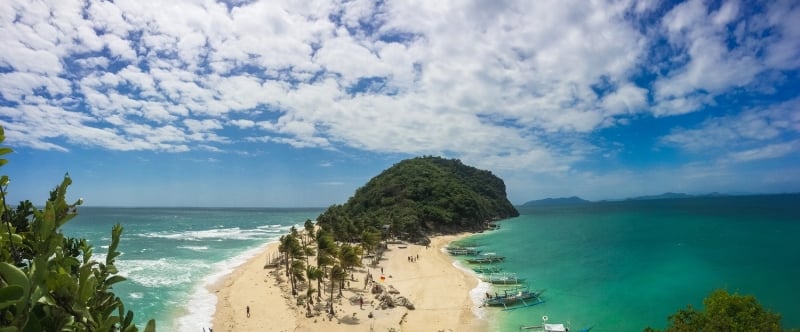
Imagine getting a taste of this tropical paradise in Gigantes Islands. Yep, this is in Iloilo! | Image credit: Kevin Romas
When you think of the Philippines, many islands and cities may come to mind. Edenic Boracay and Palawan, bustling centres like Cebu and Manila — but seldom Iloilo. We’re here to change that with this fun fact-filled piece, and possibly bring you to one of your greatest escapes this year!
Also read: Important Things To Keep In Mind When Travelling to The Philippines
Where to stay in Iloilo

Image credit: Citadines Amigo Iloilo Official Facebook Page
Before mapping out your sightseeing route in Iloilo City, it’s best to sort out your accommodations first. City adventurers and history buffs will enjoy lapping up the culture surrounding Citadines Amigo Iloilo, winner of the 2022 Travel Excellence Awards by TripZilla – Value Star. Neighbouring attractions around the hotel include the Provincial Capitol, Museo Iloilo, and Casino Filipino, while Molo Church and the Temple of Goddess Mother are a short drive away — which means sightseeing spots are tantalisingly within reach!
Whether you’re staying for a day, a week, or settling in for a longer vacay, expect a relaxing base. The serviced apartments of Citadines Amigo Iloilo combine the luxury of hotel living with comforts of home. Long-term renters will feel completely at home with full kitchens and washing machines in selected apartments. Plus, hotel facilities like a fitness corner and an outdoor pool.
Now that you’ve got your Iloilo home, you’re ready to explore (or maybe even move in). Time to get to know this beautiful Visayan province! Without further ado, did you know that…
1. Iloilo is known as the “Heart of the Philippines”
Alright, we admit that a lot of destinations are tagged as “the heart of <insert country here>”, and we don’t mean to sound so jaded about this fact. But an interesting tidbit about Iloilo is that it’s called the “Heart of the Philippines” because of its geographical features. Bear with me for a bit as we tap into our inner science geeks!
Iloilo province is a part of Panay, a heart-shaped island found right smack in the middle of the Philippines. This central location truly proves handy especially for travellers who are looking to explore other parts of the country, but more on that later. Panay Island also sits in the western portion of Visayas, one of the Philippines’ three major island groups (the other two are Luzon in the north and Mindanao in the south).
Considering the shape of Panay, plus the province’s ‘centre-left’ location (middle of the country, but at the Western tip of the Visayas island group)… Iloilo literally looks like the heart of the Philippines, doesn’t it? Being in the middle also affords Iloilo its coastal charm. That means more beaches and access to fresh seafood!
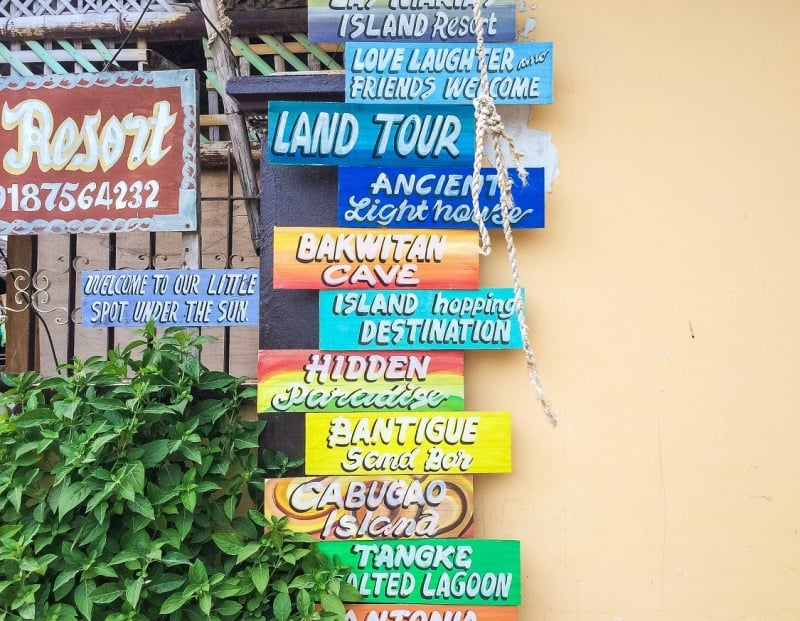
Even signages give off that signature warm Filipino hospitality! | Image credit: Kevin Romas
Of course, locals were quick to pick up the tagline and turn it into something more romantic. Filipinos are famously very hospitable and warm — a trait that has had many foreigners feeling like they’ve found their second home in another country. But it’s common knowledge across the Philippines that locals of Iloilo are extra warm and sweet-natured. In Filipino, we call this trait malambing. You’ll hear it from their tone of speaking alone!
Some say only fellow Filipinos can detect the difference, but the local language spoken in this region takes on a mild, almost melodious diction instead of the national language’s more guttural sound. You’ll have to pay a visit yourself to know what we’re talking about. But keep this in mind: When in the Philippines, you’ll certainly be taken care of; when in Iloilo, you’ll be spoiled silly by the locals!
2. Iloilo City has many monikers
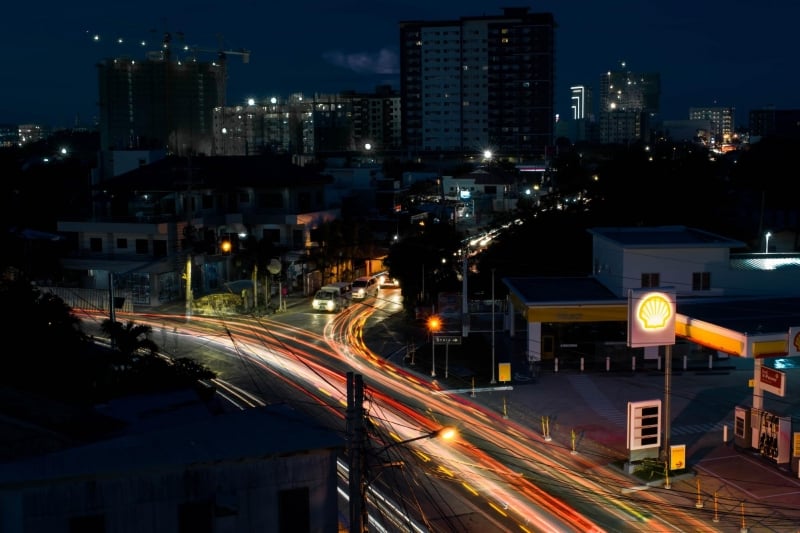
Iloilo City and its bright lights at night | Image credit: Wabi Jayme
The “Heart of the Philippines” isn’t Iloilo’s only nickname, however! Its capital, Iloilo City, goes by many monikers.
Before the capital of Cebu province was hailed “Queen City of the South”, Iloilo was the original reigning monarch — so to speak. Historically speaking, Iloilo earned this title because it was considered the country’s second-most influential city (after Manila) by the end of Spanish rule in 1898. Being a harbour city, it was an important stop in trade routes reaching China, India, and several parts of Europe. You see, Iloilo was already a centre for trade and tourism by the turn of the 20th century. And it has maintained this status to date! In 1986, a Royal Decree from Spain declared the place “La Muy Leal y Noble Cuidad de Iloilo”, which means “the Most Loyal and Noble City of Iloilo”, cementing the Spanish monarchy’s favour and deep affection.
A more modern take on Iloilo’s capital is the “City of Love.” This is a playful extension of the province’s “Heart of the Philippines” tagline, and one that banks fully on the locals’ friendliness and ‘soft-spokenness’. They say that it’s quite easy to find love in (or rather, fall in love with) Iloilo, too, because of the locals’ sweet temperament.
On the other hand, Iloilo isn’t just all about warm fuzzy feelings that will make you want to stay. The province is also home to Molo, a district that’s called the “Athens of the Philippines” because it produced a number of the country’s great thinkers! Since Iloilo was a centre for business even from the time of the Spaniards, it only makes sense that it also hosts a number of reputable universities and learning institutions. Looks, brains, and a heart? If Iloilo were to enter a beauty contest in pageant-crazy Philippines, no doubt it will enter the top 10!
3. Iloilo City is an award-winning destination
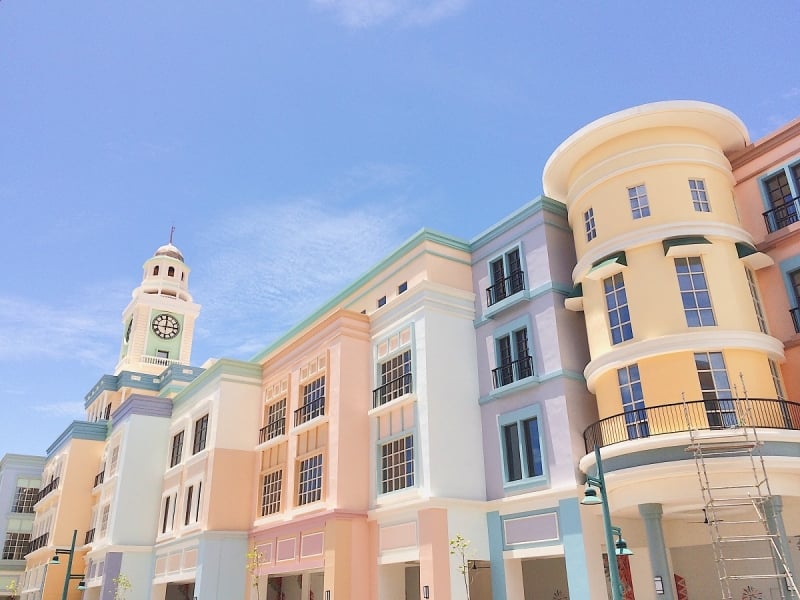
Pastel buildings in Mandurriao, Iloilo City’s business district | Image credit: Ariane Joy Cacay
Not to brag, but Iloilo’s capital bagged the ASEAN Clean Tourist City Award 2020–2022 in 2019 and was officially awarded in a ceremony in January 2020, along with two other Philippine cities. The award is pretty much self-explanatory: It honours cities that are clean and green, and that have taken it upon themselves to push for more sustainable tourism efforts.
In the past decade, Iloilo City has rehabilitated a dying river and turned into a picturesque attraction, built more infrastructures for business tourism, and even saved a decrepit heritage building from being torn down by transforming it into a museum. To see the final products of these pivotal tourism projects, you can include the Iloilo River Esplanade, the Iloilo Convention Centre, and the Museum of Philippine Economic History in your Iloilo itinerary! Already so much to do in the city and we haven’t even begun planning your great Iloilo escape yet!
To add another feather in its cap, Iloilo also won ‘Most Bike-Friendly City’ in a national competition in 2018. An exposition held in Manila cited Iloilo City as a pedestrian-and-cyclist friendly destination, making it an ideal and safe place for seeing the tourism centre even on foot! Those travelling with their family, take note.
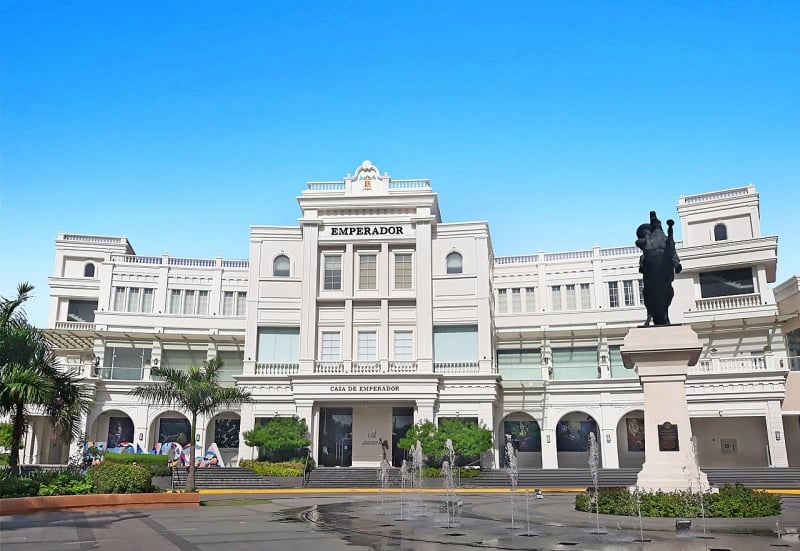
There are many things to do in Iloilo City. Don’t miss your chance to visit the Iloilo Museum of Contemporary Art! | Image credit: Americaca22ount
There are already many bike lanes in the capital, but plans of a comprehensive bike lane that cuts through the Iloilo International Airport as well as the city’s seven districts is underway. And if you’re a serious cyclist, you should know that Iloilo City also hosts several cycling events for all levels and ages!
To get an idea of how convenient Iloilo is for pedestrians, picture this: From the Iloilo River Esplanade, you can actually walk to Mandurriao, the city’s business district, and from there you can easily head on over to downtown Iloilo City for some snacks and sightseeing at Plaza Libertad or Calle Real. It’s a little bit of a workout, but it’s always great to make a walking tour out of your stroll. Or you can experience why Iloilo won ‘Most Bike-Friendly City’ and rent a bicycle for going around!
4. The province is only 3.5 hours away from Singapore, and an hour away from Manila
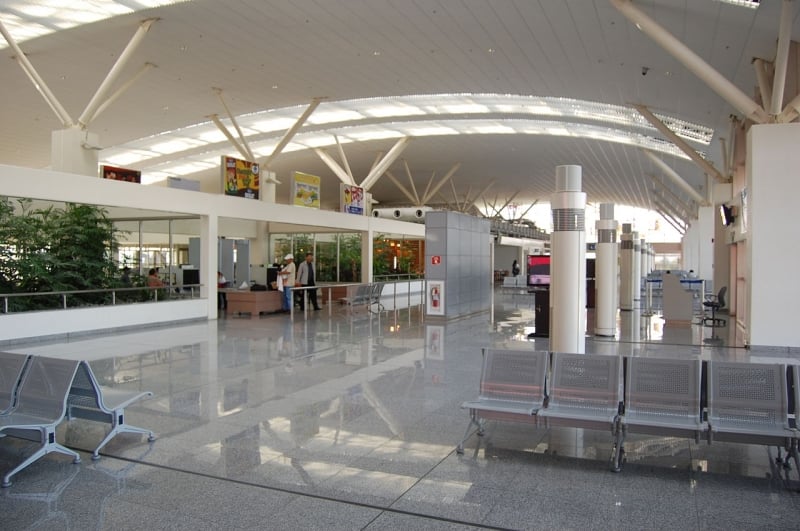
Bright and spacious, the Iloilo International Airport is your entryway to this underrated yet dreamy destination. | Image credit: George Parilla
We’ve been talking about the convenience of getting around the city, but Iloilo is accessible in terms of getting to the city as well. First of all, flying from Singapore to Iloilo will only take about three and a half hours. Meanwhile, flying from Iloilo to Manila takes less than an hour. Other popular getaways like Palawan and Cebu are only an hour away from Iloilo by aeroplane as well.
With all these getting to and around the city, you can guess as much that Iloilo is also a great pick for when you stop for a stay. For those who prioritise comfort and easy connectivity, you’re at the right place. Like we’ve mentioned again and again, Iloilo is a hub for tourism and trade, so booking luxe accommodations won’t be a problem here. Five-star and business hotels, cute B&Bs and Airbnbs, and luxury resorts are aplenty!
Rest assured planning a trip to Iloilo means you’ll be cosy and comfortable from start to end. You may even want to consider extending your holiday and making a side trip to another island, just because you can! *wink*
5. Iloilo is the place, Ilonggo is the people and their culture, and Hiligaynon is the language
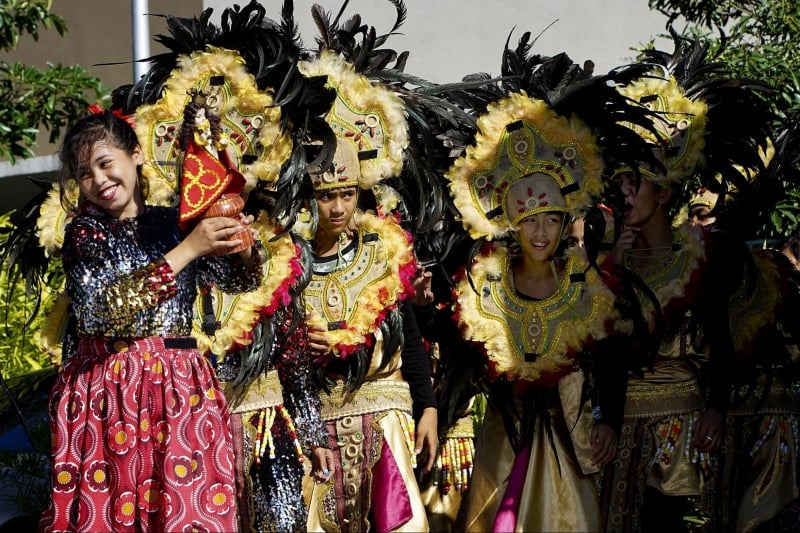
Locals all smiles even amid the heat during the Dinagyang Festival | Image credit: Ronnie Dayo
Now that we’ve covered the basics, we can get down to the nitty-gritty of Iloilo terminology. It’s quite interesting (and at times confusing!) so pay attention, folks! Say it with me: Iloilo is the province and Iloilo City is its capital. Now that wasn’t too hard, right?
But what about the people? Locals from Iloilo are called Ilonggo (pronounced eeh-long-go), and so is the place’s culture. So, for example, if you want to know if someone you meet is from Iloilo, you can ask them, “Are you Ilonggo?” And if you come across a local delicacy in Iloilo that you particularly can’t get enough of, congratulations — like many who have come before, you’ve fallen in love with Ilonggo cuisine!
It doesn’t stop there, though! You should note that the local language is neither Iloilo nor Ilonggo. It’s called Hiligaynon (pronounced hee-lee-guy-non) — a language native to Panay Island — and its speakers are considered the most soft-spoken in the Philippines. A common joke about Ilonggos is that you can never tell if they’re upset because Hiligaynon bears such delicate-sounding diction. That said, here are a few Hiligaynon words and phrases you can practise on your way to the province:
- Mayong adlaw! (Good day)
- Mayong aga! (Good morning)
- Mayong hapon! (Good afternoon)
- Mayong gab-i! (Good evening)
- Ka-on ta! (Let’s eat)
- Pila ini? (How much is this?)
- Namit! (Delicious!)
- Nami (Beautiful or nice, when describing something)
- Damo gid nga salamat (Many thanks)
These words and phrases will prove handy (and amusing for locals when you try to say them), we promise, but you don’t have to worry as most Filipinos know basic English as well. Convenient, right?
6. It’s a historical province with many mansions
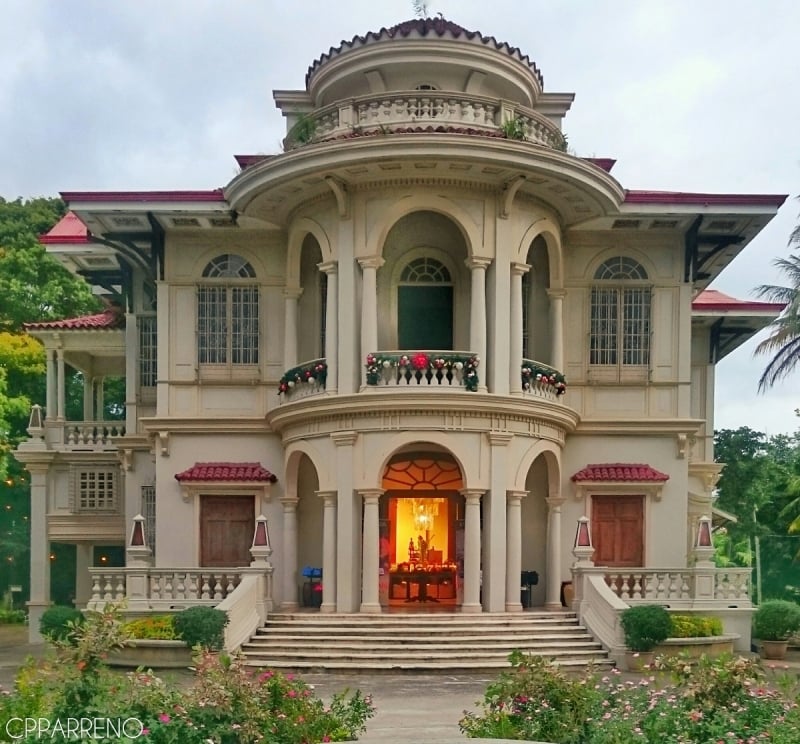
A sneak peek of the Molo Mansion | Image credit: Cpparreno
Considering Iloilo’s storied past and how it had become a hip and bustling capital during and towards the end of Spanish rule in the Philippines (which was more than 300 years, by the way!), it comes as no surprise that it was home to many of the country’s elite families. It still is, actually. But many of these socialites have already left the country or moved out of the province, leaving behind mansions that once housed the area’s moneyed clans. And boy, were these families flamboyant — a trait they say Filipinos inherited from the Spanish!
You’ll see heavy European influences in these structures’ architecture and even in Hiligaynon, since some words sound very Spanish. For instance, those familiar with the Spanish language know very well that some words take on a feminine form and a masculine form, with the latter usually ending in “o” and the former ending in “a”. So when a woman is beautiful, she is guapa in Hiligaynon and when a male is handsome, he is considered guapo.
Most of these mansions endure as museums or heritage houses included in city and heritage tours. Some we’d recommend to visit are the Molo Mansion, the Vicente Lopez Heritage House (now Nelly’s Garden), Ledesma Mansion, Lizares Mansion, and Casa Mariquit. Inside these homes, you’ll see how much the Spaniards influenced Filipino culture. It’s not a shock: Spain came to conquer the Islands (and named it after their ruling monarch, King Philip II — hence, the Philippines) in the year 1521.
7. The province is rich in cultural heritage, some you can even take home
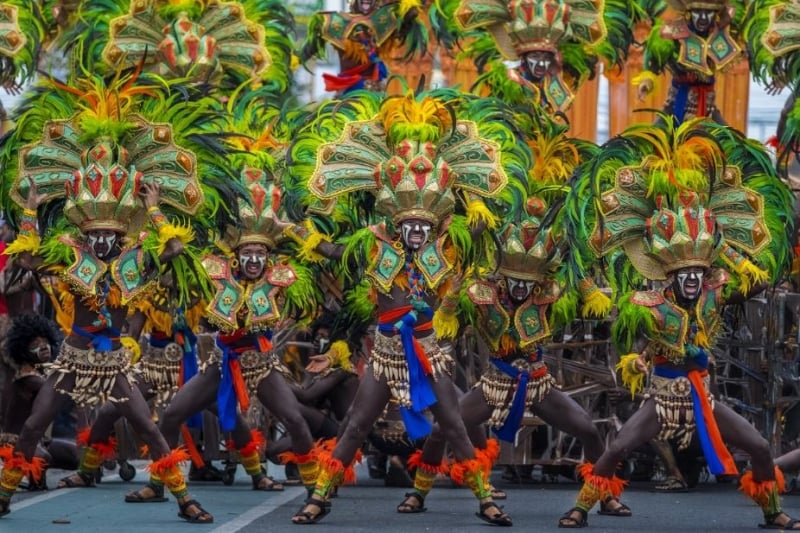
One of the outtakes of the Ati Tribe Competition, held during the Dinagyang Festival | Image credit: Aying Salupan
Colourful is one word that perfectly describes the cultural heritage of Iloilo. For many years since it was established in 1967, the Dinagyang Festival has drawn tourists from all over — local and foreign — to witness a vibrant celebration that honours the image of the Santo Niño, or the Child Jesus.
A predominantly Catholic country (again, because of centuries-long Spanish occupation), the Philippines hosts several fiestas and festivals that venerate images important to the Catholic faith. Iloilo’s Dinagyang Festival highlights how the proliferation of Christianity in the country has seamlessly meshed with indigenous culture. A highlight of the Dinagyang Festival is a parade that showcases the culture of the Ati, one of the ethnic groups in the Visayas.
If you’re one to truly immerse with the locals, make sure to book a flight to Iloilo in January to catch the Dinagyang Festival. Join the festivities held every fourth Sunday of January. Interestingly enough, the word dinagyang means merry-making or revelry, so what better way to party with the locals?

Hablon fabric from Miagao on display at the Museum of Philippine Economic History in Iloilo City | Image credit: Atelier de Hablon Official Facebook page
If you want to bring home a piece of authentic Ilonggo culture with you, then hablon textile is your go-to. Miagao in Iloilo is said to be the home of hablon, a soft fabric traditionally made of local materials such as cotton, piña (pineapple) fibre, and abaca fibre.
The process of crafting hablon is painstaking and time-consuming, and one that involves expertly manning a handloom. But hablon and hablon-making remain widely considered as one of the identity markers of Iloilo. So, supporting the industry means helping Ilonggo weavers earn a living and allowing future generations to still see the marvel that is hablon.
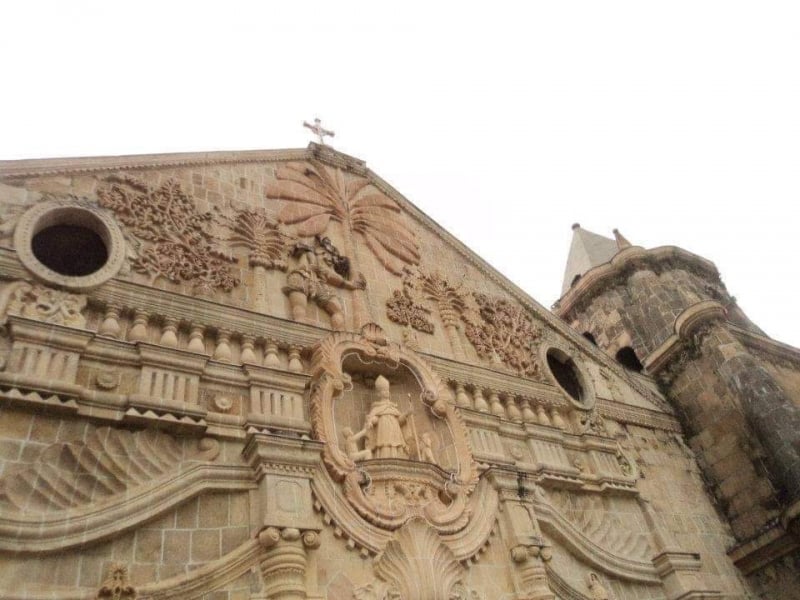
Facade of the Miagao Church, Iloilo’s famed UNESCO World Heritage Site | Image credit: Jean Jardeleza
We’ve already covered intangible heritage and a cultural keepsake you can bring with you. But make no mistake — Iloilo is also home to significant built heritage. It even boasts of its own UNESCO World Heritage site, the Miagao Church! What sets this structure apart from the others is its coral limestone facade, which also features intricate carvings that have withstood the test of time. Where else can you see Catholic images such as the Santo Niño alongside illustrations of tropical flora? Only in Iloilo!
8. Iloilo is home to many island paradises — think Boracay and Palawan, but less crowded
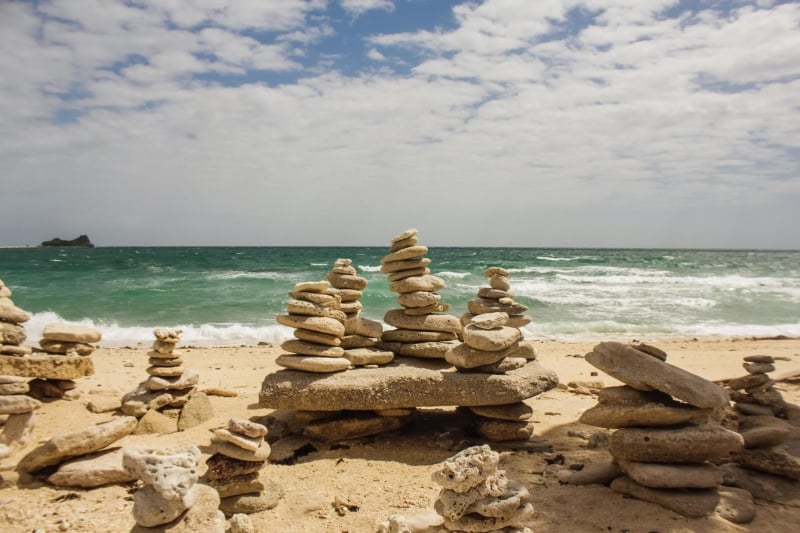
You’ll surely find zen at Gigantes Island, where it’s not as crowded but just as beautiful as other more popular beaches in the Philippines. | Image credit: Kevin Romas
Coastal. Harbour city. Surrounded by pristine waters. These are just some of the things we’ve previously mentioned in passing. But we think it will actually be one of the defining features of your great Iloilo escape!
The province brims with island paradises and coastlines adorned with long stretches of fine, white sand. Think Boracay, Coron, or even El Nido minus the throngs of tourists. There’s the Bulubadiangan Beach (also known as Sand Bar Island Beach), which makes you feel like you’ve finally found your personal slice of paradise. For unmatched views of limestone cliffs, head to Gigantes Islands.
There are more: Ajuy Islands, Concepcion Islands, and Sicogon Island. But we won’t spoil the fun by revealing too much. Instead, why don’t you check out this special Iloilo itinerary we planned just for you?
Also read: 4-Day Itinerary in Iloilo — the “Heart of the Philippines”
We’ve tempted you enough — now make the dream a reality! Who knows what wanderlust-induced magic Iloilo has in store for you. Every tropical getaway is different; better start your great escape now so you can tell us all about it when you’re back!




